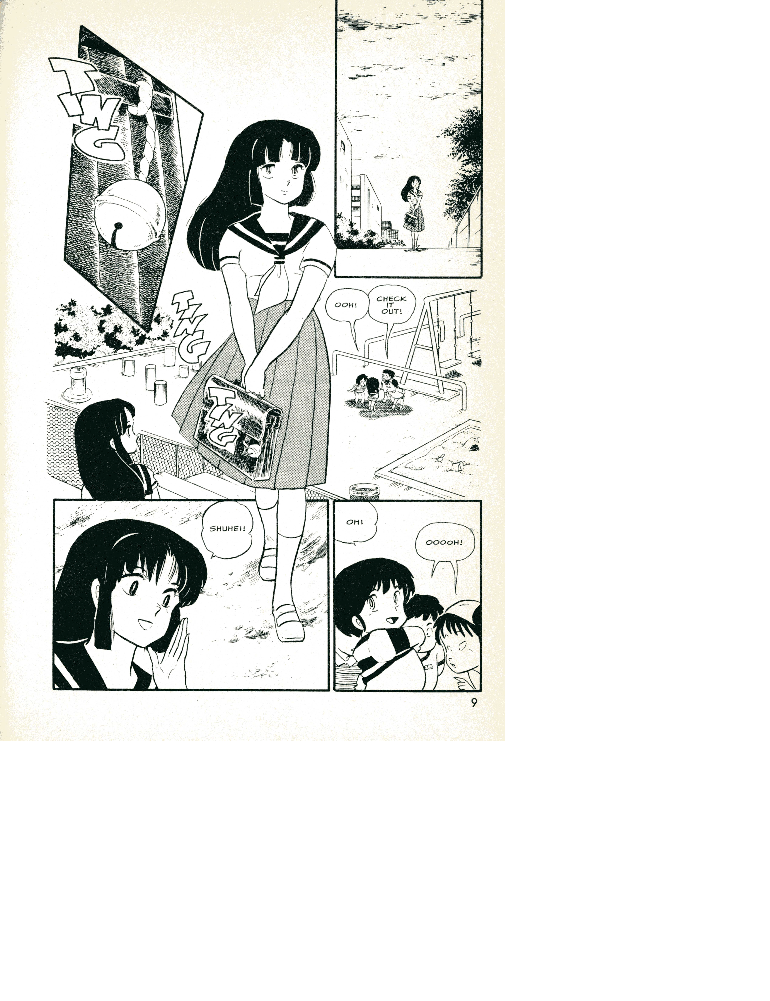Japanese Animation and New Media
Week Thirteen: Chapter Twenty-One: Emergent Positions
Here’s another example, from Takahashi Rumiko’s short manga “Firetripper” (Honoo torippaa). Here we have a complex network of ‘shots’ (read left to right). We see the girl in school uniform in the center in long shot, which imparts a sense of her as the main actor or mover in the story, but her movement is not given a strong sense of direction. The top left shows an enlargement of the bell tinkling on her bag, which highlights it as an actor in the story in the manner of an action-image, while we also have the sense of seeing it close-up on it, which lends it an affective quality. The affective quality of the bell’s potential for action is underscored by the sound effect: ting. In the crosswise image in the middle of the page behind her, we see an action (kids talking in a huddle) as well as a perception (her looking at them). And the bottom two panels present a classic ‘shot & reverse-shot’ in which she calls to the kids, and they look back. In sum, we see the three modalities of image and combination of them, but what is the overall coordination?
While there is an emphasis on action and her as an actor, the circular layout, in combination with the lack of emphasis on direction of movement, suggest that the action itself will be somewhat open-ended, circular, and without clear sense of direction. Moreover, the ‘blow-up’of the bell suggests that affective elements will play a central role as well. The exchange of words and looks will be subordinated to the combination of circulation action and affective elements. In fact, ‘Firetripper’ is the story of a schoolgirl who is transported back and forth between contemporary and medieval Japan whenever there is a violent explosion; a romance with a warrior boy plays out in the past, and gradually enters the present. But the whole is circle with strong affective moments.



